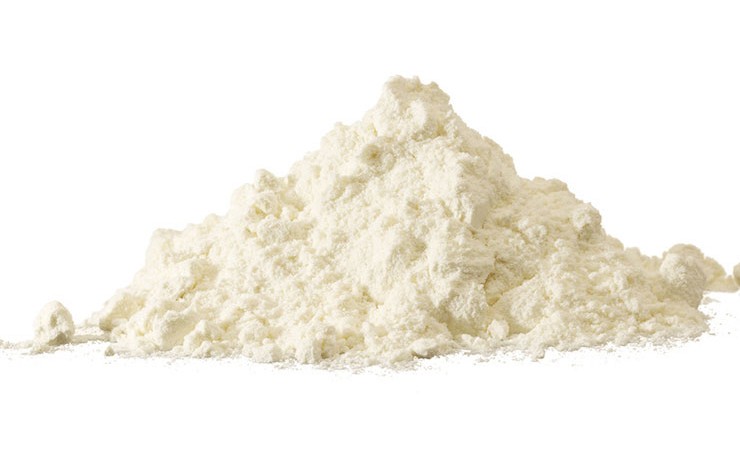You are what you eat, which is why Associate Professor Kristen Lyons and Dr Naomi Smith are so concerned about the microscopic ingredients yet to be declared safe that are being put in our foods.
There has been a flurry of media coverage nationally over the last month, including in The Guardian and elsewhere, reporting on research demonstrating the presence of engineered nanoparticles in popular brands of Australian baby formula.
These findings are groundbreaking, as they provide conclusive evidence that an ingredient (described by scientists as a needle like form of nano-hydroxyapaptite) currently prohibited by Australia’s food regulator, Food Standards Australia New Zealand (FSANZ), is in use in baby formula.
This nano-scale ingredient is currently prohibited on the basis that it has not complied with the legal requirement that only ingredients that have been tested and found to be safe can be used in baby formula.
This is the second independent study conducted by Arizona State University – recognised globally as a leading institution in nano food testing – that has determined the deliberate use of nano-scale ingredients in Australian food.
Findings from food tests published in 2015 also determined the deliberate inclusion of nanoscale titanium dioxide and nanoscale silica in 100 per cent of the food products tested, including lollies, coffee creamer, gravy and white sauce mixes.
Nano-scale, wtf?
So what are nano-scale ingredients, and why should Australians be interested to learn that they are turning up in our food?
Nanotechnology – or the science of the small – refers to the range of techniques for manipulating materials, organisms and systems at a scale of 100 nanometres or less (where 1 nanometre is one billionth of a metre). That might be hard to visualise – as a guide, a sheet of paper is about 100,000 nanometres thick… so the nanotechnology they’re putting in foods is about 1,000 times thinner than a sheet of paper.
Part of the excitement about nanotechnology, including amongst food manufacturers, relates to the novel properties that are evident at the nanoscale. For example, nanoscale hydroxyapaptite is calcium rich, nanoscale titanium dioxide makes food look brighter, and nanoscale silica can stop powdered foods from clumping.
There is a plethora of other nano-scale ingredients in use globally, and being applied across the entire agriculture and food system.
Are they safe?
Alongside the excitement about these novel ingredients, important questions arise about their health and safety risks and impacts. The very properties that make nanomaterials so attractive to industry – such as their increased reactivity and the ability to penetrate cells, can also make them potentially more toxic.
This is why it is fairly universally recognised by regulators that nanomaterials need to be assessed for safety as new chemicals before being used in consumer products.
There is a growing body of scientific evidence, often based upon non-human animal studies, that points to an array of potential health risks and concerns associated with exposure to nanoparticles.
On the basis of this science, the US National Research Council have acknowledged there is not enough science to effectively assess the risks posed by nanotechnology, and a report by the UK House of Lords has warned the health risks of nano-ingredients in food remain poorly understood.
This is particularly true of the ingredient identified in baby formula – nano-hydroxyapatite.
The baby forumula
In its review of the toxicity of hydroxyapatite, the European Commission’s Scientific Committee on Consumer Safety SCCS concluded that there are substantial gaps in knowledge about the health and safety risks. On the basis of studies that do exist, the EU SCCS concluded that the needle like form of nano-hydroxyapatite found in infant formula is ‘potentially toxic’ and on this basis should not be permitted at any level in oral products, such as toothpaste and mouthwash.
In other words, analysis of the science by leading organisation in the EU, the US and the UK concludes we simply don’t know enough about these novel ingredients that are entering into our food system to make scientific conclusions about their safety or otherwise.
Troubling questions
This scientific uncertainty raises very important public policy and food regulation challenges and questions for Australia’s food regulator. For example, on what basis do Australians have a right to know what they are eating? Who should be responsible for determining the safety and labelling of novel nano-ingredients? And what do we expect from our food regulator now that we know a prohibited substance is being included in infant formula available in Australia?
To date, Food Standards Australia New Zealand (FSANZ) has relied upon corporations to self-report on their use of nano-ingredients. It was on the basis that FSANZ had not received advice from food manufacturers and others regarding use of nano-ingredients, that they defended their long standing position that nano-ingredients were not in use in Australia’s food system.
The testing conducted by Arizona State University has forced FSANZ to finally abandon this position. The agency now claims nano-ingredients are in use, and that they are safe.
FSANZ has supported this claim by referring to a review it commissioned on nano titanium dioxide that was published last year. FSANZ claims this review concluded none of the nanomaterials being used in food, including TiO2, “are of health concern”.
In fact, the review concluded there was insufficient evidence to assess the safety of nano titanium dioxide.
FSANZ has similarly dismissed the findings of a recent French peer-reviewed study, which found that consumption of food grade titanium dioxide (TiO2 – E171) containing nanoparticles caused pre-cancerous lesions in rats – raising serious questions about its use in food.
FSANZ’s response sits in sharp contrast to that of the French Agency for Food, Environmental and Occupational Health & Safety (ANSES) which concluded that further research is needed to investigate the potential health risks associated with the use of E171 that contains nanoparticles.
ANSES also noted new research on the ability of titanium dioxide to cross the blood-brain barrier – a membrane that separates blood from brain fluid – that regulators will need to consider.
The regulator’s inadequate response
Turning to nano-hydroxyapaptite, to date FSANZ has not issued a recall notice for the infant formulas identified as containing this prohibited ingredient. In this context, FSANZ’s response is worth calling out.
In a statement to the media FSANZ said, “The presence of something, whether on the nanoscale or not, in a food that does not have a permission in the (Food Standards) Code does not mean a food is unsafe”.
This statement demonstrates a reluctance to act in accordance with the precautionary principle, as well as a reluctance to enforce the Food Standards Code.
There is plenty of evidence from other jurisdictions that adopting a precautionary approach can save money and prevent future problems. In most cases this has been a worthwhile exercise, and there are very few examples of precautions being taken when they weren’t actually needed.
A lot of the discussion this week regarding nanoscale hydroxyapatite in infant formula has been directed at critiquing Friends of the Earth for commissioning this food testing, and their interpretation of the findings. Friends of the Earth have been labeled as alarmist, and anti-science.
This seems to be a case of shooting the messenger, and obscures the much bigger questions about the regulation of Australia’s food system, including who is responsible to ensure we have a safe food system, and do the public have a right to expect the national food regulator to adopt the precautionary principle?
No definitive proof of harm doesn’t mean proof of safety; but it does mean more science is needed.
We’d welcome a public debate that included calls for more science to better understand the impacts of novel and prohibited substances.
Donate To New Matilda
New Matilda is a small, independent media outlet. We survive through reader contributions, and never losing a lawsuit. If you got something from this article, giving something back helps us to continue speaking truth to power. Every little bit counts.





